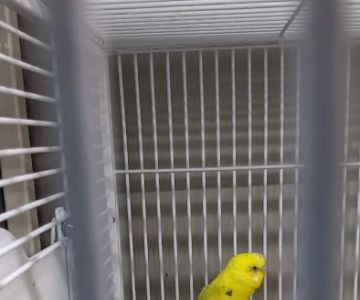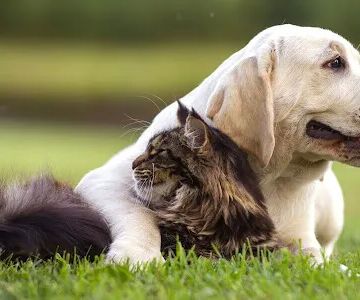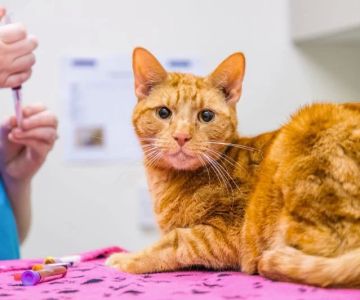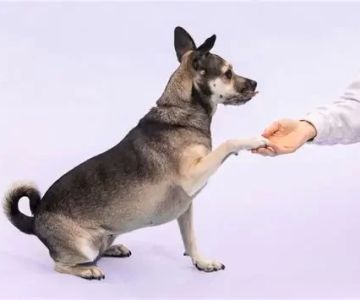- 1 - Understanding Your Senior Pet’s Needs
- 2 - Why Low-Impact Exercise Matters for Older Pets
- 3 - Signs Your Pet Is Ready to Transition to a New Routine
- 4 - Safe Types of Low-Impact Exercises for Senior Pets
- 5 - How to Create an Exercise Plan for Senior Pets
- 6 - Real-Life Success Stories from Pet Owners
- 7 - How Hidden Brook Veterinary Can Help
1. Understanding Your Senior Pet’s Needs
As pets age, their bodies undergo gradual changes — slower metabolism, weaker joints, and decreased endurance. What used to be an energetic morning jog might now leave your dog limping or your cat sleeping longer than usual. Recognizing these shifts is the first step in keeping your senior pet healthy and active. Older pets still need exercise, but the key is adjusting routines to match their evolving physical abilities.
Low-impact exercise helps maintain mobility, prevent weight gain, and support heart health without putting too much strain on aging bones and joints. At Hidden Brook Veterinary, veterinarians emphasize that consistency, not intensity, is what truly matters when it comes to senior pet fitness. With patience and the right guidance, your furry companion can remain active and happy for years to come.
2. Why Low-Impact Exercise Matters for Older Pets
Low-impact exercise isn’t just about physical activity — it’s about protecting your senior pet’s overall quality of life. Regular, gentle movement improves circulation, reduces stiffness, and keeps the joints lubricated. It can even enhance mood by stimulating the release of endorphins, which help reduce anxiety and restlessness often seen in older animals.
Unlike high-impact workouts that can worsen arthritis or cause injury, low-impact routines focus on controlled, fluid movements. Think of it as yoga for your pet — calm, steady, and restorative. Whether it’s slow walks around the block or light swimming sessions, these exercises strengthen muscles while minimizing discomfort. Many pet owners find that after just a few weeks of adjustment, their pets move more comfortably and show renewed enthusiasm for playtime.
3. Signs Your Pet Is Ready to Transition to a New Routine
Not every pet will tell you directly when it’s time to slow down, but their behavior often provides subtle clues. Watch for these signs:
• Difficulty standing or lying down: This can indicate joint pain or muscle stiffness.
• Slower pace during walks: If your pet lags behind, it’s time to reduce intensity.
• Hesitation to jump or climb stairs: Older pets often avoid high-impact movements that cause discomfort.
• Increased sleeping or lower interest in play: Fatigue may be a sign that your pet’s exercise needs have changed.
Transitioning doesn’t mean stopping activity altogether. Instead, it’s about finding new ways to keep your pet active safely. Always consult your veterinarian before changing your pet’s exercise routine, especially if they have pre-existing conditions like arthritis, hip dysplasia, or heart disease.
4. Safe Types of Low-Impact Exercises for Senior Pets
There are plenty of ways to keep senior pets moving without causing strain. Here are some vet-recommended options:
1. Leisurely walks: Short, slow walks are ideal for maintaining cardiovascular health while avoiding overexertion.
2. Swimming or hydrotherapy: Water exercise is excellent for joint support. It allows movement without weight-bearing pressure, making it ideal for dogs with arthritis.
3. Gentle indoor play: Using soft toys or short fetch games encourages movement in a controlled environment.
4. Balance and coordination drills: Activities like standing on a soft mat help strengthen stabilizing muscles.
5. Stretching and massage: Light stretches combined with pet-safe massages promote flexibility and relaxation.
For cats, encourage low-impact play with feather wands or rolling balls, allowing them to stretch and move naturally without overexertion. Each activity should be enjoyable — never force your pet to continue if they seem tired or disinterested.
5. How to Create an Exercise Plan for Senior Pets
Building a personalized fitness plan for your senior pet involves observation, patience, and gradual adjustment. Start with short sessions — 10 to 15 minutes once or twice a day — and monitor how your pet responds. If they seem energized afterward, slowly increase the duration over time.
Step 1: Consult your veterinarian for a baseline health check.
Step 2: Set realistic goals based on your pet’s breed, age, and condition.
Step 3: Mix low-impact activities for variety and engagement.
Step 4: Track progress with notes or videos to identify improvements in mobility or mood.
Step 5: Adjust as needed — some days will require more rest, and that’s perfectly normal.
Remember: gradual change prevents injury and helps your pet’s body adapt comfortably. At Hidden Brook Veterinary, specialists can help design custom exercise plans suited to your pet’s specific health requirements.
6. Real-Life Success Stories from Pet Owners
Take Daisy, a 12-year-old Golden Retriever from Colorado. After years of arthritis pain, Daisy’s owners worked with their vet to introduce low-impact water therapy. Within three months, Daisy regained strength and could climb stairs again without help. Or Max, a senior cat who rediscovered his playful side through daily feather wand sessions that kept him agile without stress on his joints.
These transformations show that with the right balance of care and exercise, older pets can enjoy active, fulfilling lives. Pet owners often report not just physical improvements but emotional ones — happier, more alert pets who seem to “come alive” again through gentle movement and affection.
7. How Hidden Brook Veterinary Can Help
At Hidden Brook Veterinary, our mission is to help senior pets age gracefully and stay active. We offer personalized fitness consultations, rehabilitation programs, and mobility-friendly product recommendations. Our veterinarians understand that every pet’s journey is unique — from arthritic dogs needing hydrotherapy to senior cats who benefit from gentle play routines.
If you’re unsure how to start, we’re here to guide you. With professional advice and compassionate care, Hidden Brook Veterinary ensures that your senior pet transitions to low-impact exercise safely and joyfully. Because a healthy body means a happier life — at every age.











